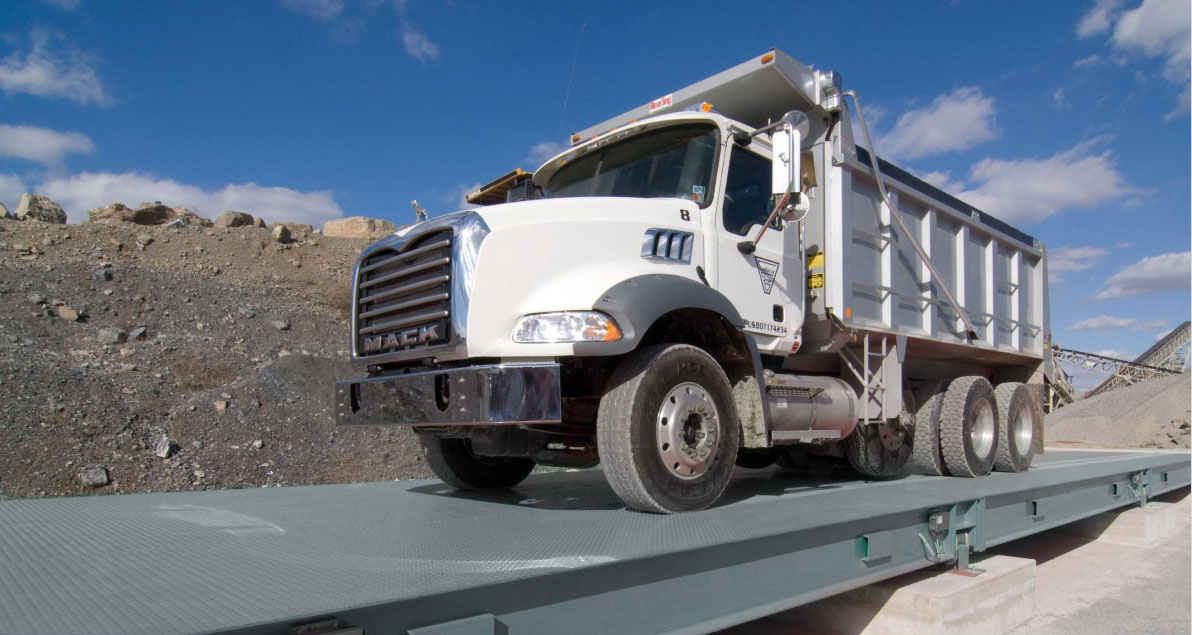
In the world of transportation, accurately determining the weight of each truckload is crucial for both operational efficiency and regulatory compliance. With advancements in technology, onboard truck scales have emerged as one of the most reliable and versatile systems for weighing loads. These scales offer a wide range of features that simplify the weighing process and provide real-time weight information.
In this blog post, we will delve into the features and elements of onboard truck scales that make them indispensable tools for the transportation industry.
Simplifying Operations and Enhancing Versatility
On-board truck scales are designed with simplicity in mind, making them easy to operate for individuals involved in the loading process. Whether you are using loaders, haul trucks, earth movers, or excavators, these scales can be seamlessly integrated into your existing equipment. Their versatility allows for accurate weighing across various types of trucks, eliminating the need for separate weighing systems for different vehicles. This streamlines operations reduces downtime, and ultimately saves valuable time and resources.
Ensuring Accuracy in Load Weighing
One of the primary benefits of onboard truck scales is their ability to accurately determine the weight of the goods being loaded. By providing precise weight measurements, these truck scale manufacturers enable businesses to optimize their load planning, ensure compliance with weight restrictions, and prevent under-loading or overloading, which may result in costly charges or fines. The weight data is typically displayed on a clear digital indicator, allowing operators to easily monitor and record load weights during the loading process.
Improving Efficiency with Real-Time Data
On-board truck scale installation offers the unique advantage of providing real-time weight information as the truck is in motion. This feature allows operators to continuously monitor the exact payload production value, ensuring optimal load distribution and maximizing transportation efficiency. With this data readily available, businesses can make informed decisions regarding load optimization, route planning, and resource allocation. By leveraging real-time weight data, companies can enhance their operational productivity and overall profitability.
Elements of On-board Truck Scales
-
PSI Gauges
These scales employ air suspension gauges that accurately measure the weight of the truck. They are commonly used in industries such as farming, feed, grain, and hot businesses. The weight is displayed using a standard PSI unit, providing a straightforward measurement system.
1. Analogue Weighing
This system utilizes air suspension to weigh the cargo in kilograms. It can be used with any type of air suspension, making it a versatile option for various truck configurations and applications.
2.Load Cells
On-board truck scales equipped with load cells utilize air transducers to measure weight by converting force into an electrical signal. This technology is commonly used in suspension freight trucks. The load cells can accurately detect downward force through tension, pressure, and bowing, ensuring precise weight measurements.
3.Wireless Operations
Some onboard truck scales feature digital wireless monitoring devices that are remotely operated. These devices provide accurate weight measurements for different types of air suspensions. Additionally, they can send alerts when the truck reaches its maximum capacity, preventing overloading and promoting safe transportation practices.
Increased Efficiency through Time Savings
One of the key advantages of onboard truck scales is their ability to save time during the weighing and loading process. Traditional methods of weighing often require trucks to visit external weighbridges, causing delays and disruptions to the transportation workflow.
On-board truck scales eliminate the need for these detours by providing an integrated weighing solution directly on the truck itself. This streamlines the entire process, allowing trucks to be weighed and loaded more efficiently, thereby reducing idle time and improving overall productivity.
Furthermore, onboard truck scale manufacturers in the USA enable simultaneous weighing and loading, as the weight is determined as the cargo is being loaded onto the truck. This eliminates the need for separate weighing operations, saving considerable time and effort for both drivers and loaders. The instant feedback provided by onboard scales allows for quick adjustments to achieve the desired load weight, minimizing unnecessary handling and optimizing loading efficiency.
Enhancing Safety and Compliance
Accurate weight measurement is not only essential for operational efficiency but also for ensuring safety and compliance with regulations. Overloaded trucks pose significant risks on the road, such as increased braking distances, reduced maneuverability, and potential damage to infrastructure. By using onboard truck scales, companies can prevent overloading and mitigate these risks, promoting safer transportation practices.
In addition, many jurisdictions have strict weight regulations in place to protect road infrastructure and maintain fair competition in the industry. On-board truck scales enable companies to comply with these regulations by providing accurate and reliable weight measurements. By avoiding fines and penalties associated with non-compliance, businesses can protect their reputation, maintain good standing with regulatory authorities, and operate within legal boundaries.
Integration with Fleet Management Systems
On-board truck scales can be seamlessly integrated with fleet management systems, allowing for efficient data collection and analysis. The weight data captured by the scales can be transmitted to a central database, providing valuable insights into load distribution, asset utilization, and performance metrics. Fleet managers can access this data in real time, enabling them to make informed decisions regarding route optimization, load planning, and resource allocation.
By integrating onboard truck scales with fleet management systems, businesses can optimize their operations on a broader scale. They can identify patterns, trends, and areas for improvement, leading to more effective decision-making and enhanced overall efficiency.
This integration also facilitates better communication and collaboration among stakeholders, enabling a streamlined flow of information and improved coordination throughout the transportation process.
Conclusion
On-board truck scales have revolutionized the way load weighing is conducted in the transportation industry. Their simplicity, versatility, and ability to provide accurate and real-time weight information have significantly improved operational efficiency and profitability for businesses. By utilizing these advanced weighing systems, companies can optimize their load planning, prevent costly fines, and make informed decisions to maximize their resources. With onboard truck scales, the transportation industry is equipped with efficient and accurate tools to tackle the challenges of hauling large loads most effectively.
